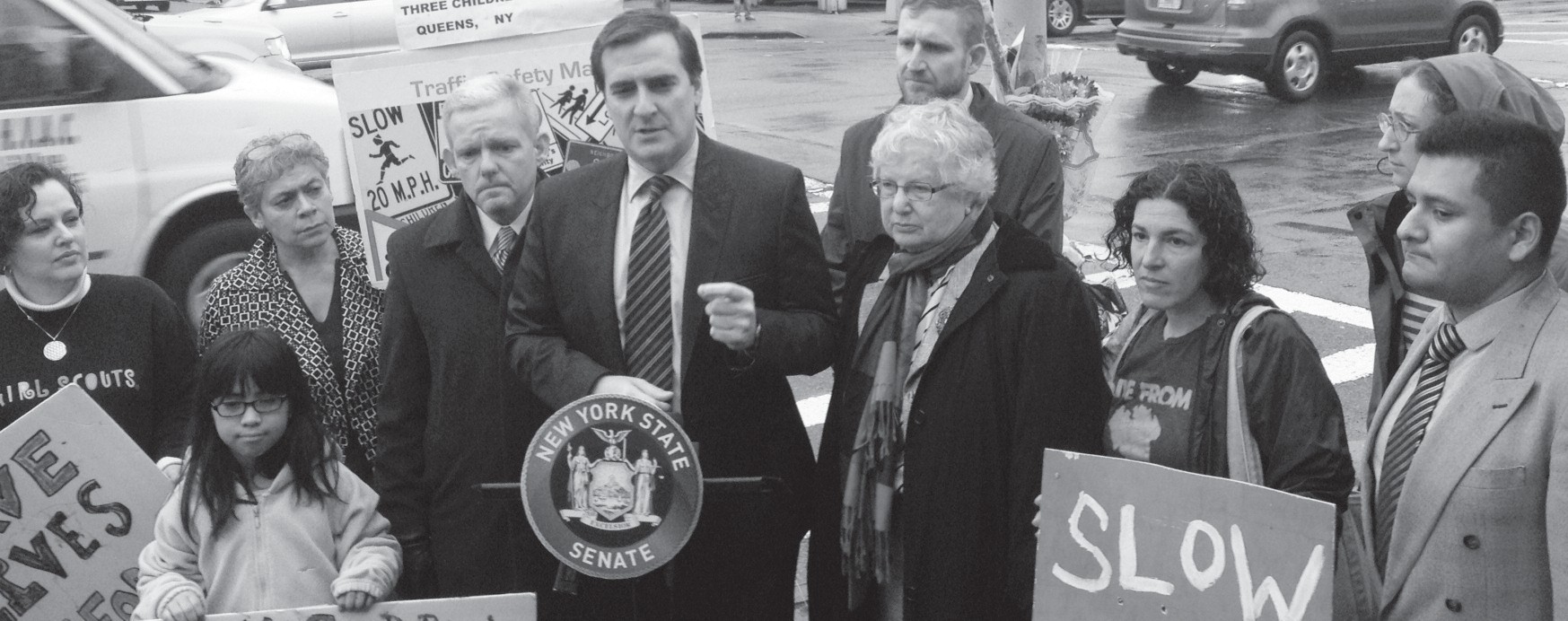Neighborhood Participates In Funding Process For First Time
Residents attended a participatory budgeting info session at the Greater Ridgewood Youth Council (GRYC) on Wednesday, Aug. 13 to engage in the process that allows individuals to choose which capital projects to fund in their district.

This fourth session–held at the GRYC Summerfield Street headquarters–was organized by City Council MemberAntonio Reynoso to engage the community and educate residents on the process that will determine how to spend $1 million in discretionary funds.
This year marks the first time the process will used in the district, which covers Ridgewood south and west of Myrtle and Forest avenues and parts of Bushwick East Williamsburg and Williamsburg. Council members allocate a portion of discretionary funds to the process–Reynoso chose to earmark $1 million, but can choose to increase that number.
The meeting last Wednesday represented the infancy of the process, Ava Farkas, director of community organizing for Reynoso’s office, said. At the session, volunteer sign-up sheets and a presentation on how participatory budgeting works were distributed so residents could get involved, and learn more about the instrument.
The overarching goal of the process is to increase community involvement in budgeting decisions, it was noted.
“Public budgets are your money,” Farkas said.
After a lawmaker chooses to allocate a certain amount of money, neighborhood assemblies are held, which will begin in September and run through November; then delegate meetings to develop proposals on what projects the community wants funded will run through February; project expos to explain the various projects will be organized through March; and a vote will be collected from March through April.
Members of the community 16 years of age or older are eligible to vote, and will be given a list of five projects to choose the ones they want funded. The process is now used in 1,500 cities and towns, with nine council district’s last year, and 23 this year, Farkas stated.
“There is a million dollars at stake that Council Member Reynoso wants to spend in the district,” GRYC President Bob Monahan said. “You’re going to get to decide how it’s spent on a capital perspective.”
Those in attendance were asked to present their ideas on capital projects to fund.
Ideas from the groups included funds to preserve the Ridgewood Reservoir in it’s current state and not to breach it as the Parks Department has planned, more playgrounds in the area, more Greenstreets and green spaces in the district, funds for more and better bathrooms at local parks and a community garden atop the former Joseph Garity American Legion Post, which will soon house GRYC programs and services.
“We want to preserve the Ridgewood Reservoir,” Tom Dowd, a long-time resident, said. “It’s a good place to do real science. It’s still an incredibly beautiful place. We think that’s one good project.”
Another resident proposed a recreation center for kids that offers sports programs.
Participatory budgeting was first used in Porta Allegre, Brazil, and has since been implemented in Chicago, Toronto and Vallejo, Calif.
In the last cycle, $12 million was spent in council districts using participatory budgeting, Farkas said.
Farkas and Kevin Worthington, also of Reynoso’s office, presented an exercise to outline for residents what is meant by capital versus expense funding.
After using projects examples to define the differences, Worthington told attendees, “You’re ready for P. B., congratulations.”
Capital funding is brick and mortar projects that will ast at least five years. Only capital projects that cost over $35,000 and less than one million can be nominated, Farkas stated.
Only residents of the 34th District may vote in the election, it was noted.
To become a budget delegate, an individual must be at least 14 years old. They must live, work, own a business, go to school or have a child in school in the district. Immigration status is not a factor.
Many ways to engage exist, Worthington and Farkas noted, including coming to a neighborhood assembly, becoming a budget delegate, voting on projects and spreading the word. Volunteers are also needed for phone banking, translation services, child care. Food for meetings, and meeting spaces are also always needed, Worthington said.
“Being a volunteer really means outreach and spreading the word,” Farkas said.
District committee meetings will begin this week, she noted.
“You can really make an impact in the community,” volunteer Heather Hatton said. “You can really do anything if you have the votes.”


































